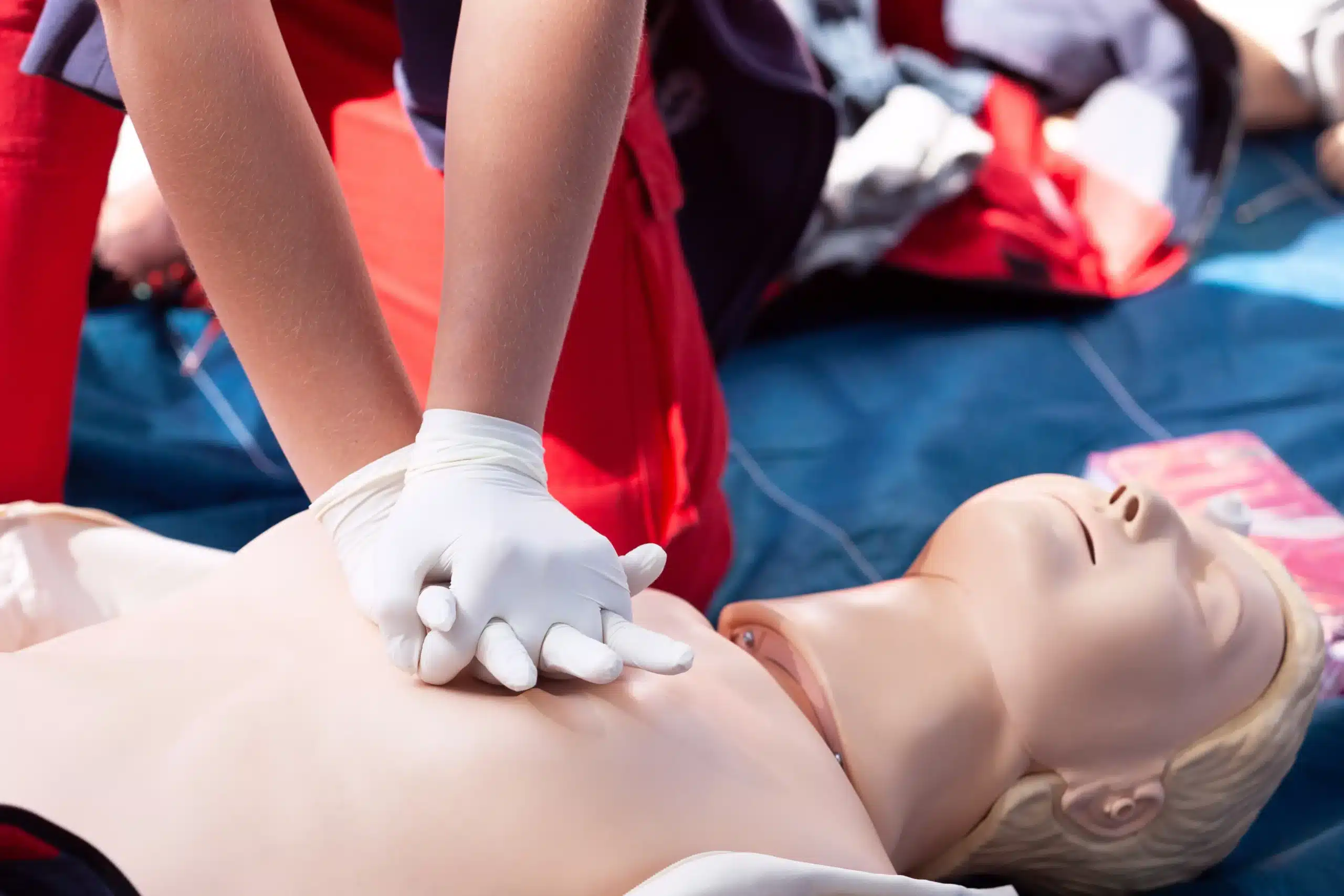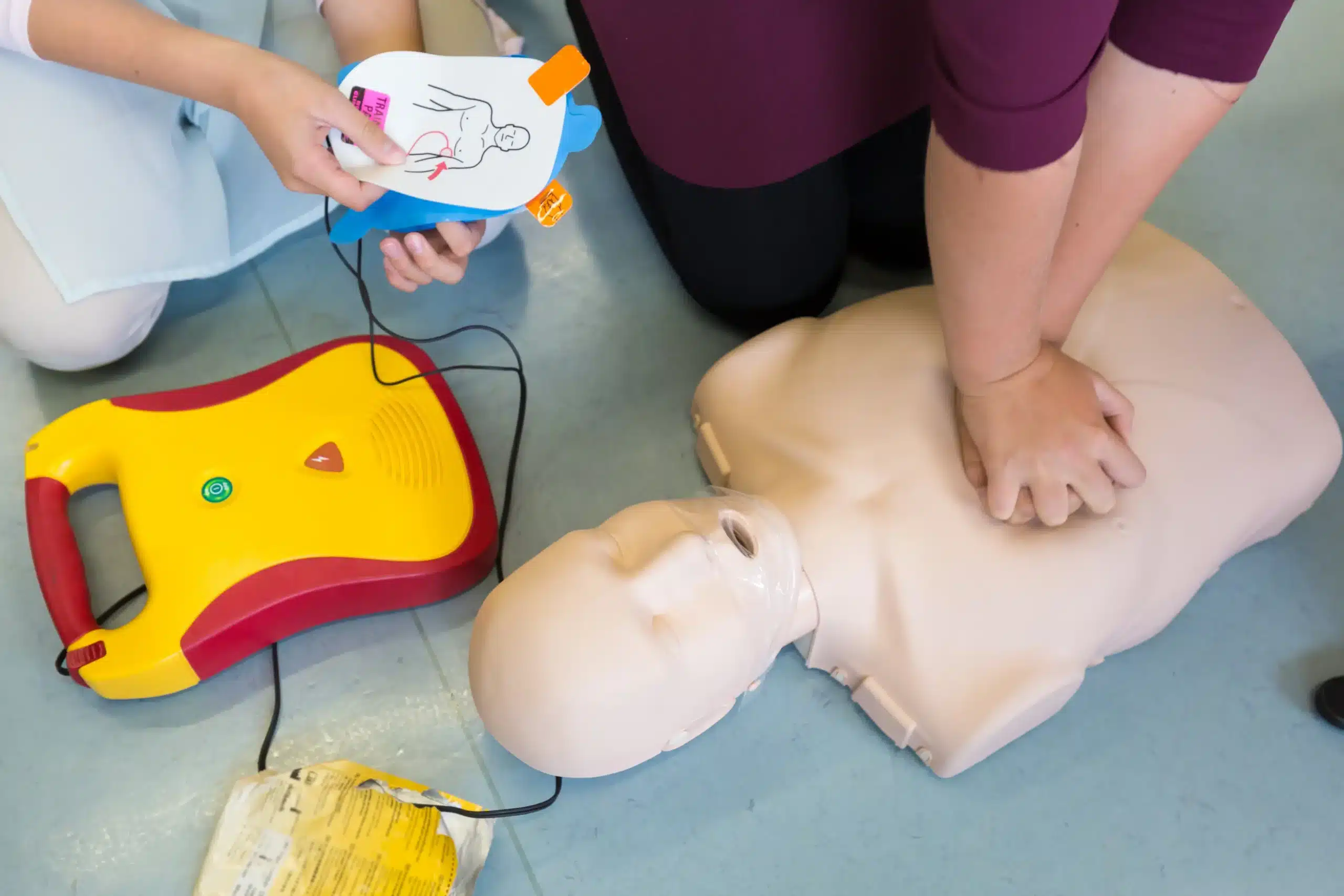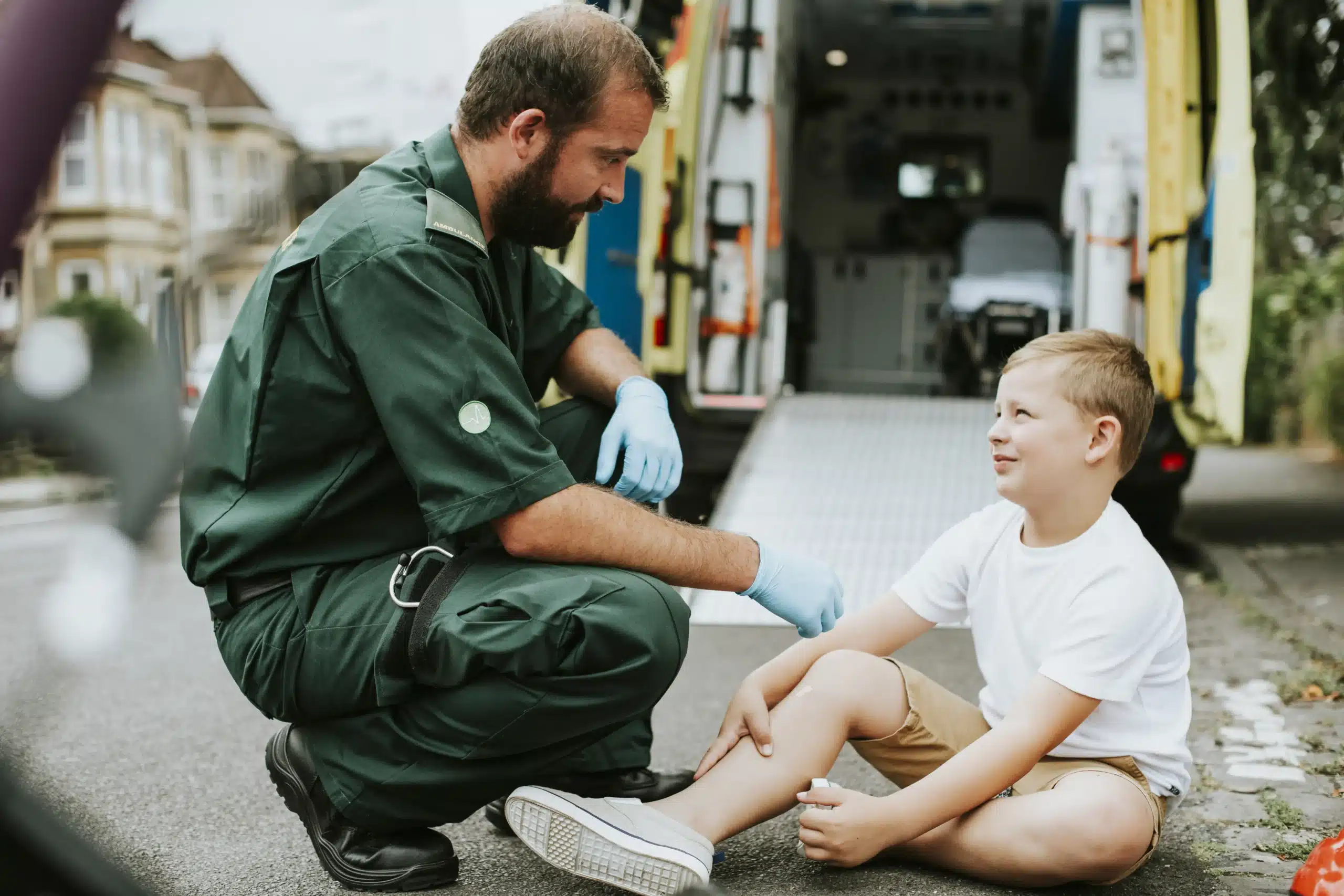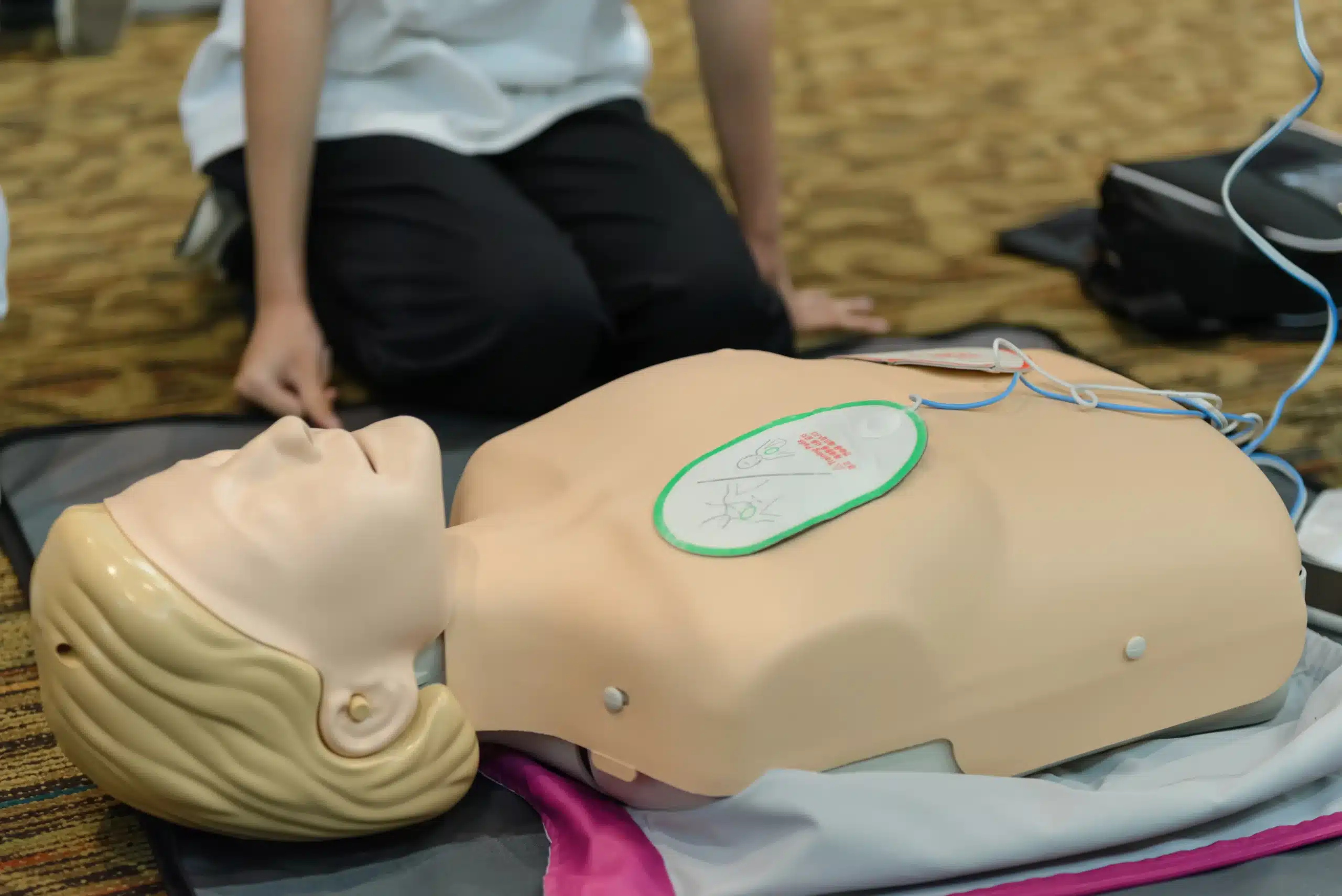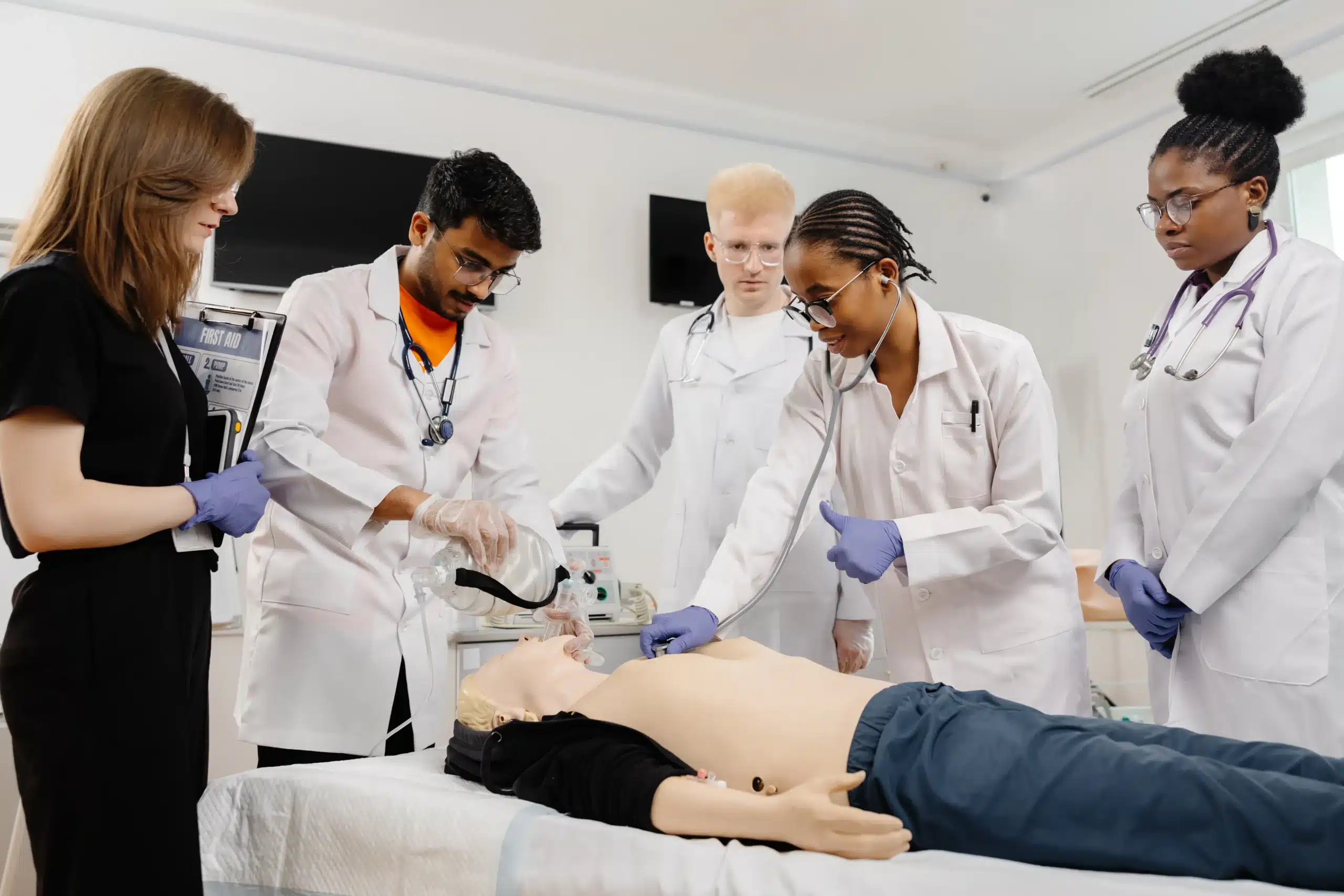In the blink of an eye, a playful afternoon can turn into a scary situation. A child slips and falls, starts choking on a snack, or experiences a sudden medical emergency. Being prepared for these moments is every parent and caregiver’s priority. Pediatric CPR certification provides the skills and confidence to respond effectively in such crises, potentially saving a child’s life. This comprehensive guide will explore the ins and outs of pediatric CPR certification, from its importance and the topics covered in training courses to where you can get certified and how to maintain your skills. We’ll also discuss the cost of certification, the differences between pediatric and adult CPR, and the various learning formats available, empowering you to make informed decisions about your training.
Key Takeaways
- Pediatric CPR equips you for emergencies: This specialized training gives you the skills to handle situations involving infants and children, going beyond basic CPR to address their unique needs. It’s a valuable asset for anyone regularly around kids.
- Find the right course for your needs: Consider factors like the instructor’s experience, the materials provided, and whether the certification is recognized in your field. Think about why you’re taking the course – are you a parent, a teacher, or a healthcare worker? This will help you choose the best fit.
- Stay up-to-date: Your CPR skills need regular refreshing. Make sure you renew your certification on time and look for opportunities to keep learning and practicing. Staying current ensures you’re always ready to respond effectively.
What is Pediatric CPR Certification?
Pediatric CPR certification equips you with the skills to handle emergencies involving infants and children. This specialized training focuses on lifesaving techniques tailored to young patients’ unique physiological and developmental needs. It goes beyond general CPR, addressing the specific vulnerabilities and responses of growing bodies. This training is crucial for anyone regularly around children, from parents and babysitters to teachers and healthcare providers. Knowing how to react quickly and effectively can significantly improve outcomes in a crisis. If you’re considering getting certified, understanding the training and how it differs from standard adult CPR is important. This certification empowers you to provide immediate care in critical situations, potentially bridging the gap until professional medical help arrives. It covers various skills, from recognizing emergency signs to administering CPR and using an automated external defibrillator (AED). The goal is to give you the confidence and knowledge to act swiftly and appropriately when a child’s life is at stake. For a deeper look into pediatric first aid, CPR, and AED training, the National Safety Council offers helpful resources. You can also explore the International CPR Institute’s pediatric first aid course for more details on their program.
Why is Pediatric CPR Certification Important?
Knowing what to do in a medical emergency can make all the difference. Pediatric CPR certification equips you with the skills to respond effectively to life-threatening situations involving infants and children. It’s a valuable asset whether you’re a parent, caregiver, or professional.
For Parents and Caregivers
As a parent or caregiver, your child’s safety is paramount. Pediatric first aid and CPR training goes beyond simply getting certified—it’s a commitment to protecting the children you love. Accidents happen, and knowing how to respond can significantly improve a child’s chances of survival during a crisis. CPR certification empowers you to act quickly and confidently if a child in your care experiences a medical emergency, such as choking or cardiac arrest. It provides peace of mind knowing you have the skills to handle these situations.
For Professionals Working with Children
If you work with children, pediatric CPR and first aid certification is often a job requirement and sometimes even mandated by state licensing. Pediatric first aid and CPR training offers numerous benefits for childcare providers, educators, and other professionals. These courses teach you how to recognize and respond to various medical emergencies, from minor injuries to life-threatening situations. Certification demonstrates your commitment to children’s safety and enhances your professional credibility. It also ensures you can provide basic life support and potentially save a child’s life. Pediatric CPR training addresses the specific physiological differences between children and adults, equipping you with age-appropriate techniques.
Where to Get Certified: Leading Organizations
Several reputable organizations offer pediatric CPR certification. Choosing the right one depends on your specific needs and location. Here are some of the leading providers:
American Heart Association (AHA)
The AHA is a well-respected organization known for its evidence-based guidelines for CPR and ECC. Their Heartsaver Pediatric First Aid CPR AED course is updated regularly, ensuring you learn the most effective techniques. The AHA offers various courses, including options for healthcare providers and the general public.
American Red Cross (ARC)
The ARC is another trusted source for CPR and first aid training. Their Adult and Pediatric First Aid/CPR/AED course meets OSHA/workplace requirements and covers emergencies involving adults, children, and infants. The ARC has numerous training centers, making it easy to find a class nearby.
National Safety Council (NSC)
The NSC’s Pediatric First Aid, CPR, and AED training meets the requirements for all 50 states and adheres to the latest CPR and ECC guidelines. They offer various learning formats, including online and in-person classes.
Safety Training Seminars
Safety Training Seminars offers comprehensive pediatric first aid, CPR, and AED certification. They focus on high-quality, affordable training with excellent customer service. They serve Oakland, Alameda, and Berkeley, CA, and offer group discounts. Explore their website for CPR, BLS, ACLS, PALS, NRP, and first-aid training options. They also have a low price guarantee.
EMS Safety Services
EMS Safety Services provides various CPR and first aid courses, including pediatric CPR, for both healthcare professionals and the general public. They offer flexible training options for different schedules and learning preferences.
ProTrainings
ProTrainings offers online and blended learning for CPR and first aid, including pediatric CPR courses that comply with the latest guidelines. Their online format allows for self-paced learning, which is convenient for busy individuals.
National CPR Foundation
The National CPR Foundation offers comprehensive CPR training, including pediatric CPR, to equip people with the skills to respond to emergencies involving children. They focus on providing high-quality training that meets industry standards.
What Will You Learn in a Pediatric CPR Course?
Pediatric CPR certification equips you with the skills to respond effectively to medical emergencies involving infants and children. It goes beyond basic life support, encompassing a range of essential topics to ensure comprehensive preparedness. If you’re considering getting certified, understanding the curriculum and course formats can help you choose the best option for your needs.
Key Topics Covered
A pediatric CPR course covers core life-saving techniques tailored to the specific needs of young children and adolescents. You’ll learn to recognize the signs of a medical emergency, including cardiac arrest, and take appropriate action. The curriculum typically includes training on cardiopulmonary resuscitation (CPR), using an automated external defibrillator (AED) on a child, and providing first aid for common childhood injuries and illnesses. Many courses also discuss legal considerations and the role of a pediatric first aid provider. These courses often emphasize a multi-provider approach to CPR, preparing you to work effectively as part of a team in emergency situations. CPR Classes Oakland offers comprehensive pediatric CPR training covering all these essential aspects. For a detailed overview of pediatric first aid, CPR, and AED training, check out this helpful resource from SafeSense CPR.
Online, In-Person, or Blended Learning
Pediatric CPR courses come in various formats to suit different learning styles and schedules. Online courses offer flexibility, allowing you to learn at your own pace from anywhere with internet access. In-person classes provide hands-on training with certified instructors, offering real-time feedback and guidance. Blended learning combines the advantages of both formats, with online modules and in-person skills practice. HSI is a good example of this blended approach.
How Long Does it Take?
The length of a pediatric CPR course depends on the format and specific content. Online courses typically require four to six hours, while blended learning programs may take around six. In-person courses can range from two to over five hours, depending on the depth of coverage. MyCPR NOW provides a helpful overview of typical course lengths. Choose a course that fits your schedule and allows enough time for both theory and practical skills development. The American Red Cross offers a fact sheet with more information on course components and durations.
How Much Does Pediatric CPR Certification Cost?
Knowing the cost of Pediatric CPR certification helps you budget and plan your training. Let’s break down the typical expenses and explore ways to make it more affordable.
Average Price Range
Pediatric CPR certification, often included with first aid training, typically ranges from $50 to $150. Combined CPR and first aid courses, including certification fees, usually cost between $75 and $200. Several factors influence the final price, including your location, the training provider, and the course format (online, in-person, or blended learning). Basic CPR certification might be closer to the $50–$150 range, while more comprehensive courses, like those including ACLS or PALS, could be closer to $200. Online CPR courses sometimes offer lower prices, potentially as low as $20, but make sure the certification is valid for your needs. For example, CPR Classes Oakland offers a low price guarantee, ensuring competitive rates for your training.
Group Discounts and Financial Assistance
If you’re training a team or group, look for group discounts. Many providers, including CPR Classes Oakland, offer reduced rates for organizations, businesses, or community groups. This can be a smart way to lower the per-person cost, making training more accessible. Some training centers may also offer financial assistance or sliding-scale fees based on individual circumstances. Don’t hesitate to ask your chosen provider about potential discounts or assistance programs.
Benefits of Pediatric CPR Certification
Knowing how to perform CPR on a child could save their life. Pediatric CPR certification equips you with the skills to respond effectively in a medical emergency. But the benefits extend beyond the practical application of these lifesaving techniques. Let’s explore some key advantages of becoming pediatric CPR certified.
Save Lives in Emergencies
The most immediate benefit of pediatric CPR certification is the ability to respond confidently during a crisis. CPR and first aid training provides you with the knowledge and skills to assess a situation, perform CPR, and administer basic first aid until professional help arrives. This quick action can significantly improve a child’s chances of survival, especially in cases of cardiac arrest or near-drowning. Early intervention can minimize the risk of long-term complications. For more information on CPR classes and certification, visit our BLS CPR page.
Build Confidence in Childcare
Whether you’re a parent, grandparent, or childcare provider, pediatric CPR training instills confidence in your ability to care for children. Knowing you can handle emergencies involving children creates a safer and more nurturing environment. This peace of mind allows you to focus on providing quality care, knowing you’re prepared for unexpected events. Pediatric first aid and CPR certification demonstrates a commitment to child safety, which can be reassuring for parents and guardians. This can also be a valuable asset for childcare providers looking to attract new clients.
Advance Your Career
For many professionals working with children, pediatric CPR certification is a job requirement or provides a competitive edge. Teachers, coaches, camp counselors, and healthcare providers often seek this certification to enhance their qualifications. Demonstrating your commitment to safety can make you a more desirable candidate and open doors to new career opportunities. CPR training can also attract parents who prioritize their children’s well-being, giving your business a competitive advantage. It shows you’re dedicated to providing a safe and secure environment. CPR Classes Oakland offers a variety of courses and certifications, including group discounts, to help you advance your career.
Pediatric CPR vs. Adult CPR: Key Differences
Knowing how to respond to a medical emergency involving a child can be life-saving. While the basic principles of CPR remain consistent, there are crucial differences between performing CPR on a child and an adult. Understanding these distinctions is vital for providing effective aid.
Age-Specific Techniques
CPR techniques vary significantly depending on whether you’re assisting an infant (under 1 year), a child (1-12 years), or an adult. For children and infants, rescue breaths (breathing into the person’s mouth) are a critical component of CPR, often more so than for adults. This is because pediatric cardiac arrests frequently stem from breathing issues like choking. For adults, the focus shifts more toward chest compressions. The American Heart Association guidelines provide a comprehensive breakdown of these age-specific techniques. Remember, providing rescue breaths is still a crucial part of adult CPR.
Equipment and Force Considerations
Another key difference lies in the depth of chest compressions. For adults, aim for compressions of about two inches. For children, the recommended depth is about two inches for prepubescent children and up to 2.4 inches for teenagers, while for infants, it’s closer to 1.5 inches. Avive AED offers further information on the differences between infant, child, and adult CPR. Using the correct compression depth is essential for effective CPR. Similarly, when using an Automated External Defibrillator (AED), ensure it has a child setting or child-sized pads if the patient is a child. Remember, applying excessive force can be harmful to a child’s delicate chest and ribs.
How to Maintain Your Pediatric CPR Certification
Keeping your Pediatric CPR skills sharp is as important as learning them in the first place. This section covers how to stay up-to-date and confident in your abilities.
Renewal Requirements and Process
Pediatric CPR certifications, like most CPR certifications, are typically valid for two years. To maintain your credentials, you’ll need to take a renewal course before your current certification expires. This keeps your skills fresh and aligned with any updated guidelines. Check with your certifying organization, such as the American Red Cross or American Heart Association, for their specific renewal process. Some employers may also have their own recertification requirements, so it’s always wise to review workplace policies. Staying informed about these requirements will help you avoid any gaps in your certification.
Continuing Education Opportunities
Even if your certification isn’t up for renewal yet, there are many ways to keep your pediatric CPR knowledge current. Look for continuing education courses that offer advanced training or refreshers on specific techniques. These courses can provide valuable insights and help you stay prepared. Organizations like the American Red Cross often offer continuing education units (CEUs), which can be helpful for professionals who need them for license renewal. Remember, maintaining proficiency in pediatric CPR is an ongoing commitment to the safety and well-being of the children you care for. Regularly reviewing your skills and seeking opportunities for growth will ensure you’re always ready to respond effectively in an emergency.
Choosing the Right Pediatric CPR Course
Finding the right pediatric CPR course means considering a few key factors to ensure you receive high-quality training that meets your needs. Here’s what to look for:
Instructor Qualifications
The instructor’s expertise is crucial. Look for instructors certified by a reputable organization like the American Heart Association or the American Red Cross. Experienced instructors, especially those who are also healthcare providers, can offer valuable real-world insights. Safety Training Seminars prioritizes experienced instructors. A skilled instructor can clearly explain concepts, demonstrate techniques, and answer your questions thoroughly, building your confidence to respond in an emergency.
Course Materials and Resources
Comprehensive course materials are essential. Ensure the course covers infant and child CPR, choking relief, and AED use. High-quality courses often provide manuals, videos, and practice equipment. Check if the course follows the latest guidelines from organizations like the American Heart Association. Updated materials are critical for providing effective care. Pediatric First Aid courses often include these resources.
Certification Recognition and Validity
A recognized certification demonstrates your competence. Verify that the certifying organization is nationally accredited and accepted in your field if needed for your job. Look for certifications aligned with the 2020 AHA Guidelines, ensuring your training is up-to-date. HSI’s pediatric CPR program adheres to these guidelines. A valid certification provides credibility, assuring you that your training meets industry standards.
Factors to Consider for Your Needs
Think about your reasons for taking pediatric CPR training. Are you a parent, a childcare provider, or a healthcare professional? Your needs will influence your course choice. Parents might prioritize basic life support skills, while childcare providers may need more comprehensive training, including first aid and AED use. Consider the course format (online, in-person, or blended), schedule, and location. ChildCareEd emphasizes the importance of this training for childcare providers. Choosing the right course ensures you gain the necessary skills. If you need affordable options, explore group discounts or financial assistance.
Related Articles
- Pediatric CPR & First-Aid Training in Oakland – Oakland CPR Classes
- Why CPR is Crucial in Healthcare
- Pediatric Advanced Life Support (PALS) in Oakland – Oakland CPR Classes
- CPR Certification in Oakland: Your Guide – Oakland CPR Classes
- Find CPR Classes Near Me: A Complete Guide – Oakland CPR Classes
Frequently Asked Questions
Is pediatric CPR certification different from regular CPR certification? Yes, pediatric CPR certification focuses on the specific needs of infants and children, addressing their unique physiology and smaller airways. While the basic principles of CPR are similar, the techniques, depth of compressions, and rescue breaths differ significantly. Pediatric CPR training also often includes information on common childhood illnesses and injuries.
Where can I find a pediatric CPR course near me? Several organizations offer pediatric CPR certification, including the American Heart Association (AHA), the American Red Cross (ARC), the National Safety Council (NSC), and Safety Training Seminars. You can find courses by searching online or contacting these organizations directly. Many training centers offer both in-person and online options. If you’re in the Oakland, Alameda, or Berkeley area, check out Safety Training Seminars for local classes.
How long does a pediatric CPR certification last, and how do I renew it? Most pediatric CPR certifications are valid for two years. You’ll need to take a recertification course before it expires to maintain your credentials and stay up-to-date with the latest guidelines. Contact your certifying organization for specific renewal procedures.
What if I need CPR certification for my job? Many employers require or recommend pediatric CPR certification, especially for those working with children. Check with your employer to see if they have specific requirements or preferred certifying organizations. Some professions, like healthcare and education, may have mandatory certification requirements.
How much does pediatric CPR certification typically cost? The cost of pediatric CPR certification varies depending on the provider, location, and course format. Prices typically range from $50 to $150, often combined with first aid training. Some providers offer group discounts or financial assistance, so it’s always worth asking. Safety Training Seminars, for example, has a low price guarantee.
